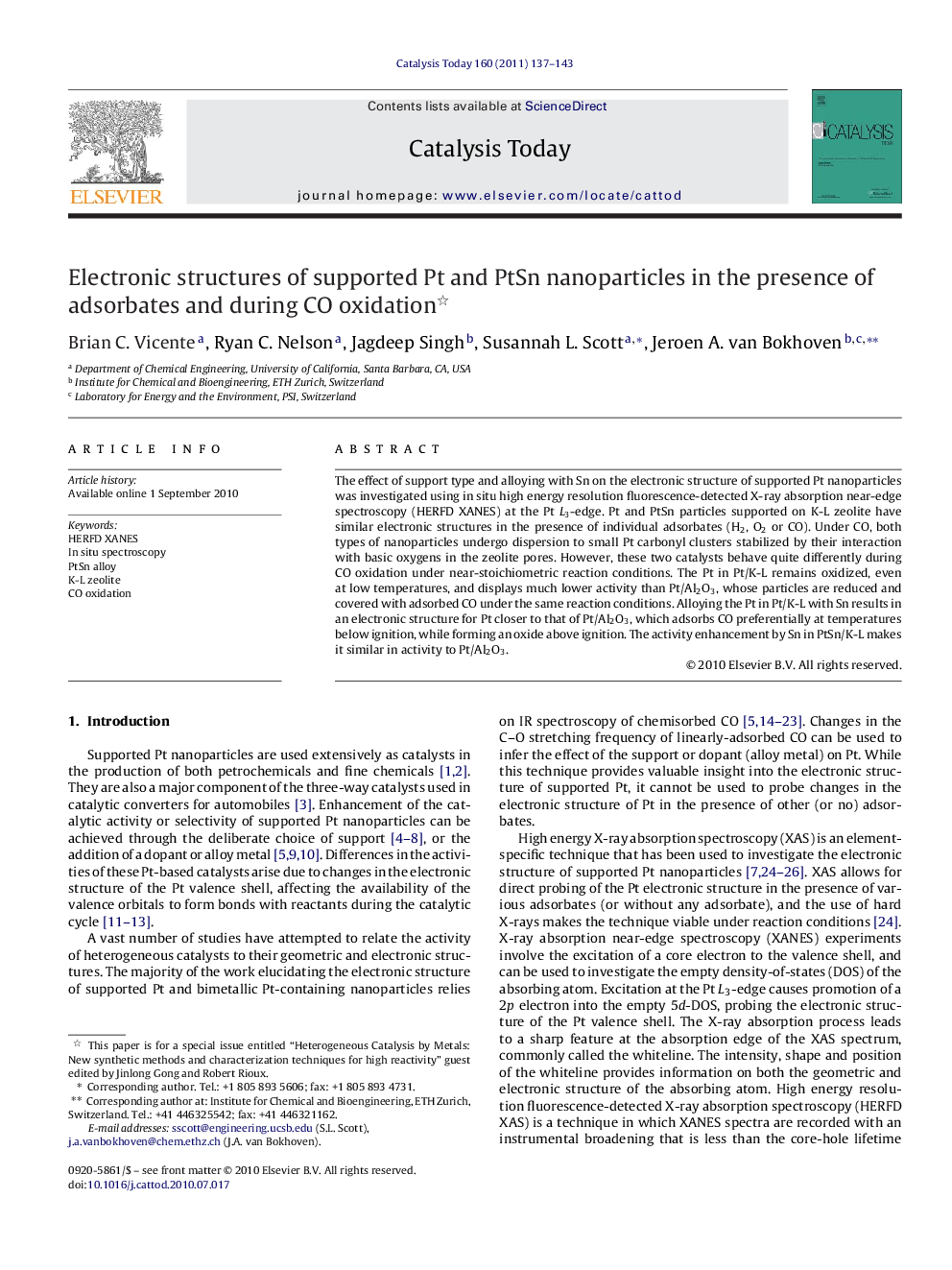| Article ID | Journal | Published Year | Pages | File Type |
|---|---|---|---|---|
| 56136 | Catalysis Today | 2011 | 7 Pages |
The effect of support type and alloying with Sn on the electronic structure of supported Pt nanoparticles was investigated using in situ high energy resolution fluorescence-detected X-ray absorption near-edge spectroscopy (HERFD XANES) at the Pt L3-edge. Pt and PtSn particles supported on K-L zeolite have similar electronic structures in the presence of individual adsorbates (H2, O2 or CO). Under CO, both types of nanoparticles undergo dispersion to small Pt carbonyl clusters stabilized by their interaction with basic oxygens in the zeolite pores. However, these two catalysts behave quite differently during CO oxidation under near-stoichiometric reaction conditions. The Pt in Pt/K-L remains oxidized, even at low temperatures, and displays much lower activity than Pt/Al2O3, whose particles are reduced and covered with adsorbed CO under the same reaction conditions. Alloying the Pt in Pt/K-L with Sn results in an electronic structure for Pt closer to that of Pt/Al2O3, which adsorbs CO preferentially at temperatures below ignition, while forming an oxide above ignition. The activity enhancement by Sn in PtSn/K-L makes it similar in activity to Pt/Al2O3.
